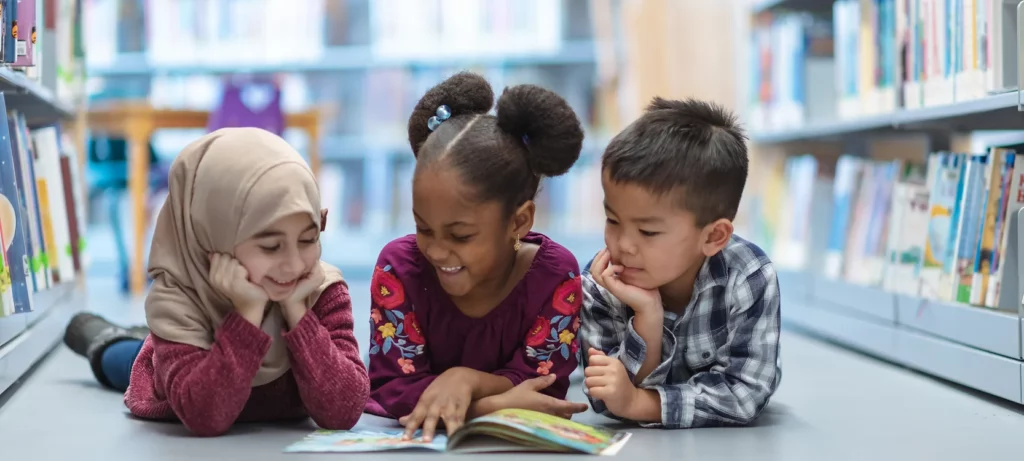
Academic Milestones are key academic skills that students need to develop at each grade.
The literacy milestones are critical literacy skills that build on each other and prepare students for achievement in the next grade and beyond.
These literacy milestones are based on California grade-level standards and are applicable for a child at any school.
(by Halloween)
Click on the name of the reading skill below each milestone to learn more and find activities and resources.
Ask and answer questions that demonstrate understanding of a text. Use evidence from text to support answers. Why did the author write this? What evidence supports your idea?
Describe characters in a story and how their actions contributed to events. How does (character) react when __? Why do they act this way? How does the character change throughout the story?
Write narratives to develop real or imagined experiences or events using descriptive details (engaging sight, hearing, touch, smell and taste).
(by Valentine’s Day)
Click on the name of the reading skill below each milestone to learn more and find activities and resources.
Identify the main idea of a nonfiction text; name the key details and explain how they support the main idea. What is the main idea of this paragraph? What details support the main idea?
Discuss the central message or moral of a text and explain how the key details support the message. What is this story trying to teach us?
Write about a topic and group related information together. Provide a concluding statement that summarizes the main ideas or feeling of a paragraph.
(by Summer Break)
Click on the name of the reading skill below each milestone to learn more and find activities and resources.
Determine the central message/main idea of different types of text, including stories, folktales and fables. What do you think the author wants the readers to know?
Distinguish their own point of view from the author’s point of view. What is the author’s point of view? Do you agree or disagree with the author and why?
Write opinion pieces on topics or texts, supporting a point of view with reasons.
Watch these videos to learn what third grade students should be able to do by the end of the year.
To watch videos with subtitles: Click the settings icon in the lower righthand corner, next click “subtitles,” and then “English.”
Watch these videos to learn what third grade students should be able to do by the end of the year.
To watch videos with subtitles: Click the settings icon in the lower righthand corner, next click “subtitles,” and then “Spanish.”
Why do you think the author wrote this? What in the book makes you think that?
What is the main message or moral in this book? What makes you think that?
Who are the characters in your book? How do they react to the problem or solution? How do they change in the story?
What is the main idea of your book? What are the important details?
What are some key words in your book? What do they mean?
Do you agree with the author or not? Why?
Encourage your child to write stories using descriptive details.
Help your child to write about a topic interesting to them, including details and a conclusion!
Encourage your child to write their opinion about something, supporting their opinion with reasons.
For children with more extensive needs, practice comprehension by sequencing photos or pictures of household tasks such as brushing teeth or making meals.
Free family play groups for children ages 0-5 at several locations across San Mateo County.
Information and resources for San Mateo County families.